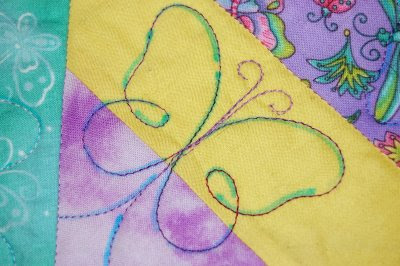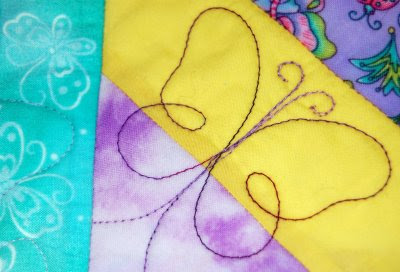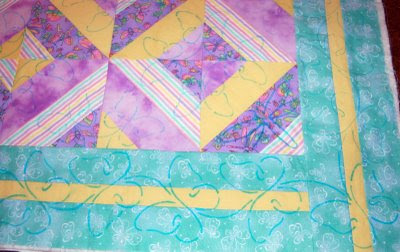 Some pens come with a blue water soluble marker at one end and a white eraser pen at the other. This is helpful when you need to remove a marked line in a small area. For larger areas, wet a paper towel with COLD water to lift the markings. You must wait for the fabric to dry before marking again or it will not hold the mark.
Some pens come with a blue water soluble marker at one end and a white eraser pen at the other. This is helpful when you need to remove a marked line in a small area. For larger areas, wet a paper towel with COLD water to lift the markings. You must wait for the fabric to dry before marking again or it will not hold the mark.Never apply heat to blue washable markers or the ink can set and may reappear as brown lines. Mark with a light touch; the less ink you have to remove the better. Plan to mark, quilt, and remove the ink as soon as possible for best results.
When quilting and binding is complete, submerge the quilt in COLD water. I use the bathtub for this step so I can see the lines disappear! Either continue to hand wash with a bit of Quilt Soap or Orvus Paste (Sodium Lauryl Sulfate) in the tub or use the washing machine. Remove excess water by rolling up in a terry towel or use the spin cycle of the washing machine. Lay the quilt flat to air dry or use the clothes dryer on a low setting for a few minutes. Finish with air drying.
Copyright ©2008, Sharon Baggs











